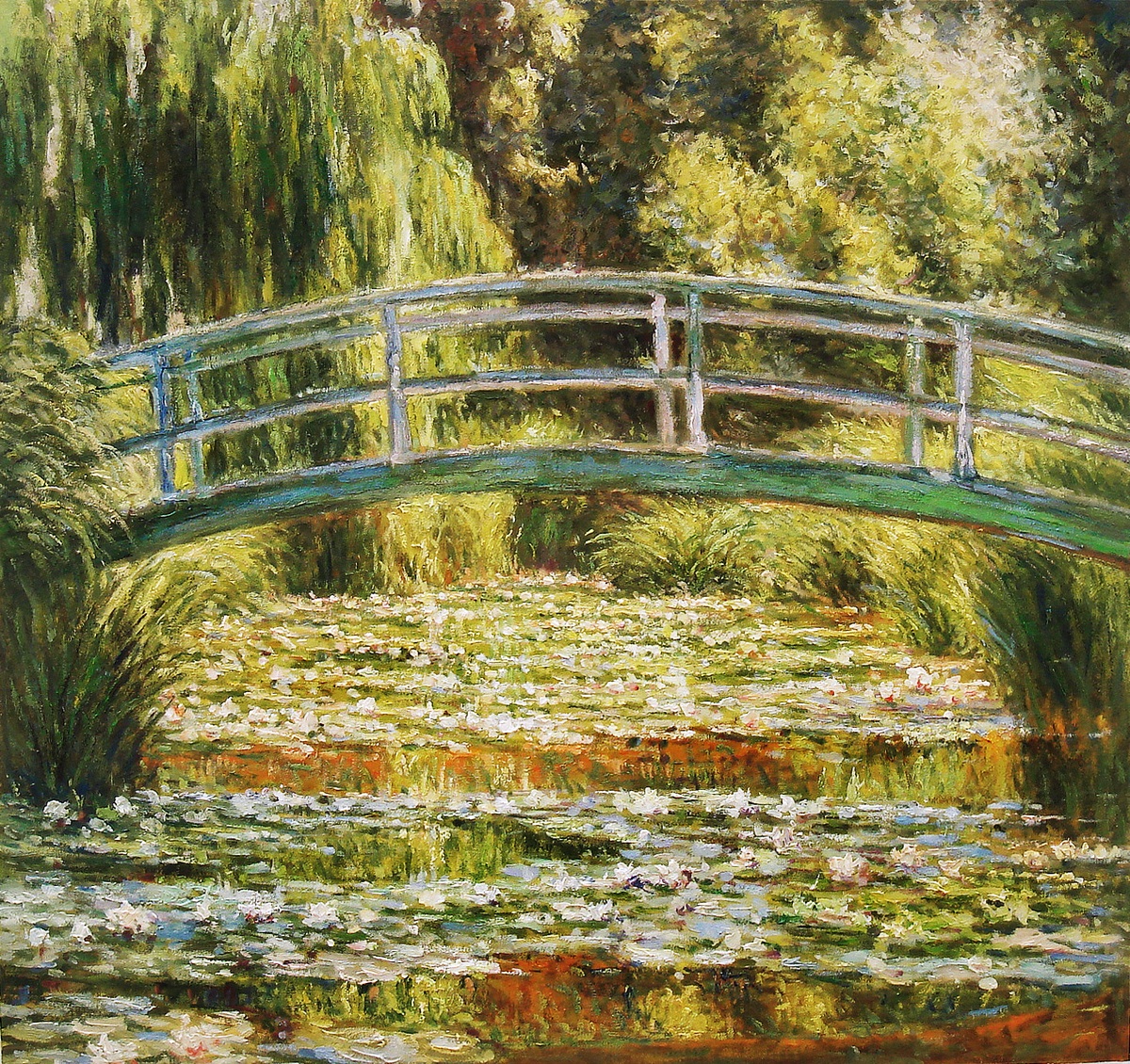
This is a brief formal analysis of one of the 250 water-lily oil paintings by the impressionist Claude Monet depicting his flower garden at Giverny, France,
Claude Monet used oil paints to depict the vivid colours he could see in his garden. the bright colours in the painting is probably the first thing a viewer notices when examining the piece, Monet's use of bright greens and reds creates a sense of late summer as you can instantly imagine the leaves swapping there lush green colour for their autom coating of vibrate red, orange and yellows when you look at this piece. the hint of red reflection in the water indicates that there are signs of autom around the garden. this use of colour creates harmony and peacefulness in the painting reflecting the change of season. Monet has only used a selection of colours on his pallet which gives the painting a warming effect as the green is slightly yellow which creates a glowing effect making the scene appear sunny.
the artist has used light in this painting to indicate the rays from the sun. This reminds the viewer that the subject was captured on a sunny day creating a warming feeling. i particularly like the way the light is captured in the reflection of the pond as he has created the illusion of water and there is a clear distinction between where the land starts and ends.
The use of small brush strokes creates texture in his work. He has layered the oil paint to mimic the organic look of the surroundings around him. the textured surface forms the effect of plantation, and the reflectiveness of the water. the artist has used texture in an interesting way, when you look at the painting from a far the lines in the layered paint come together to convey a natural look like leaves. the lines in the piece are flowing and effectively portray the movement of the weeping willow and the other plants.
Monet uses composition in his piece in a simplistic form which creates depth in a unique way. the eye is immediately drawn to the center of Japanese bridge and then down the lily pond to the forefront of the painting creating a triangle. this gives the painting width and depth and forces you to look down the pond and into the distance. the placement of the bridge makes it central in the painting, crossing the horizon the artist has carefully chosen this composition as it allows the viewer to look on either side of the painting in a gentle swooping movement following the contour of the bridge. the curved line emphasis the peacefulness and organic nature of the painting.
How does this post link to your other works? ;)
ReplyDelete